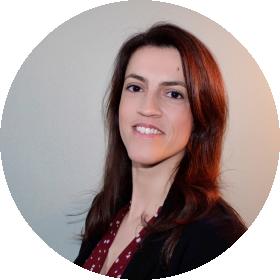
The history of art education in Brazil started to be recorded during the colonial period, when the baroque style was in vogue, imported from Portugal, although it took on some idiosyncrasies here. Art was taught in workshops, mostly in the states of Bahia, Minas Gerais and Pernambuco, which were coordinated by master craftsmen who passed on their practical knowledge to artists and artisans.
Systematic, institutionalised art education was introduced by the French Artistic Mission in 1816, when the permanent secretary of Institut de France, Joachim Lebreton (1760-1819), with the support of Dom João VI, brought to Brazil a group of artists. The leading members of the mission were painters Nicolas Antoine Taunay (1755-1830) and Jean-Baptiste Debret (1768-1848), sculptor Auguste-Marie Taunay (1768-1824) and architect Grandjean de Montigny (1776-1850), who was responsible for teaching architecture at the academy. Montigny’s legacy in Rio de Janeiro includes the buildings that housed the Academia Imperial de Belas Artes (Imperial Academy of Fine Arts) and the customs house, which is now Casa França-Brasil, an important contemporary art exhibition venue.
Academia Imperial de Belas Artes existed from 1816 to 1889 and followed the patterns of European academies, controlling artistic activity and standardising tastes, as they also organised exhibitions, competitions, awards, galleries and collections, which became responsible for conserving the heritage. In Brazil, the art produced at the academy followed neoclassical and romantic models, while the overseas travel award provided its winners with direct contact with these models.
Upon their return to Brazil, artists who had won these awards would have a teaching post assured them at the academy, the opportunity to do public works and other privileges. The strict system of rules prevented them from keeping abreast of the different aesthetic movements in Europe and the sparks of modernity already kindling in the mid-1800s.
Curiously, the introduction of Academia Imperial de Belas Artes in 1816 meant that the teaching of art in Brazil was strongly influenced by foreign models. In 1870, with the creation of the Republican Party, a wave of abolitionist sentiment emerged, led by Rui Barbosa. There were calls for an education system for the people, including the future freedmen and women, while art education had to start taking account of its applications in industry. This idea came from Walter Smith, a Briton who had settled in the USA and was a staunch defender of the teaching of geometry and technical drawing.
The development of artistic and graphic expression in Brazil began in the late 1800s with the transformation of the Imperial Academy into the Escola Nacional de Belas Artes (National School of Fine Arts). Artist Carlos Oswald created a course in etching, providing the first opportunity for artists to gain an education in printing.
Another major international influence as of the 1930s was John Dewey, who indicated ways of developing thought patterns that incorporated observing reality as a procedure for improving drawing skills. It was also at this time that the first informal schools were set up for children and adolescents, heralding a long tradition of artists who have become teachers. One pioneer was Anita Malfatti (1896-1964), who taught children in her studio in São Paulo. Also in that city, Mario de Andrade set up an art course for children when he was director of Biblioteca Infantil Municipal (Municipal Children’s Library).
The period of modernity in Brazil also spawned the first indications of a breakdown in the model imposed by Escola Nacional de Belas Artes, with an increasingly discernible gap between the art being produced and the art being taught. After it was incorporated by the Federal University of Rio de Janeiro as its School of Fine Arts (Escola de Belas Artes da Universidade Federal do Rio de Janeiro), it finally aligned itself with the art system.
Continue reading Mapping Brazil - Higher Art Education: Recent Developments

